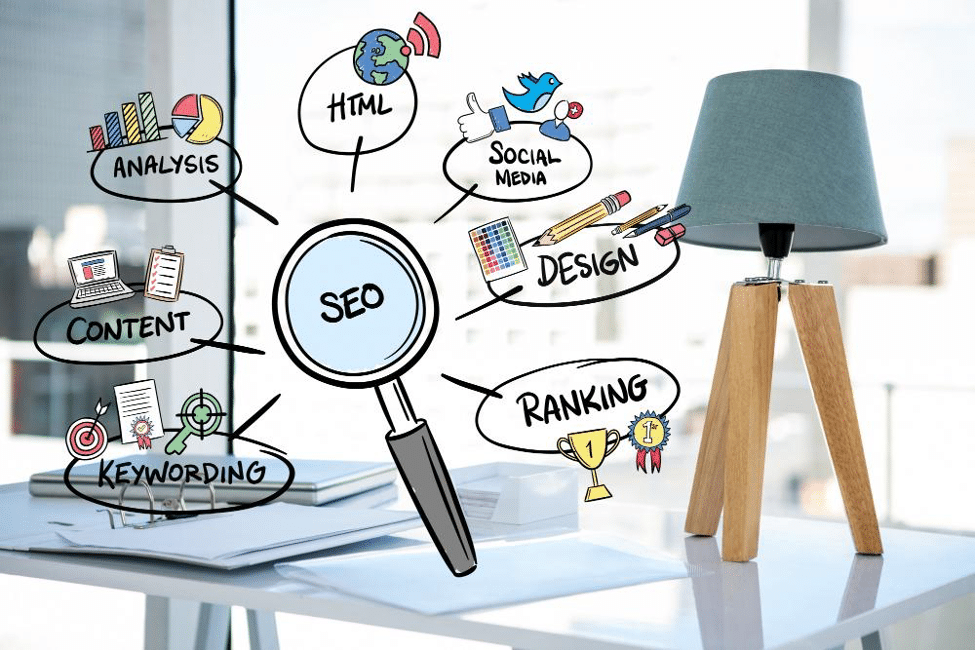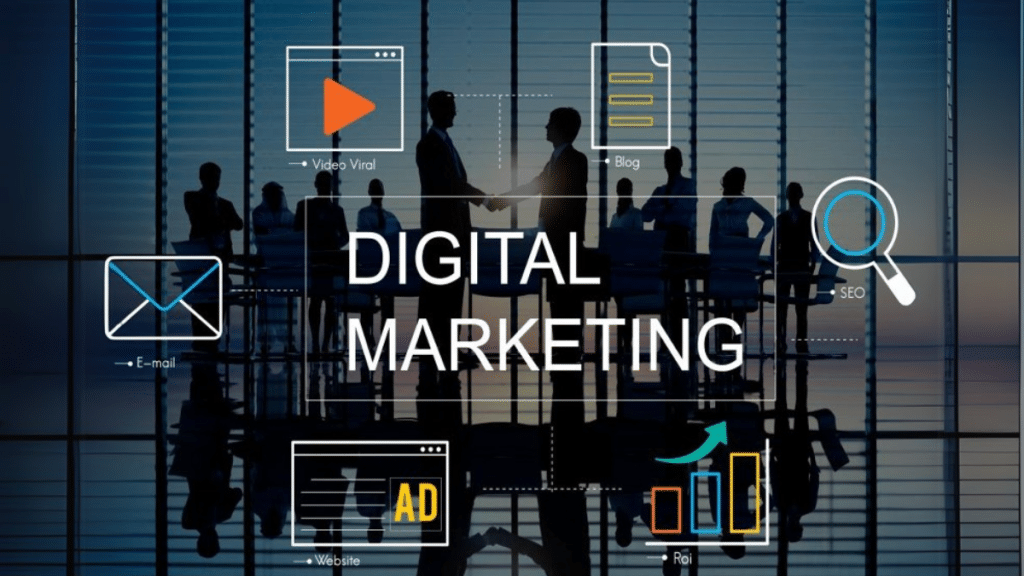When it comes to being noticed on the internet, everyone talks about search engine optimization and search engine marketing. These two are really crucial to internet marketing, and they really allow businesses to reach customers at the exact moment they are searching for solutions, products, or services.
Knowing what sets SEM and SEO apart and how to use both of them well can literally be the difference between being utterly forgotten and being the go-to choice. If you’re in the market for quick results or more of a long-term growth, learning SEO and SEM will make all the difference.
Mastering SEO to Secure Free Traffic
SEO involves optimizing your site organically to help it rank higher in search engine results pages (SERPs). One of the fascinating aspects of SEO is that it is all about making improvements to your site that benefit both search engines and actual users.
When you’re diving into SEO, you’re really focusing on three big things:
- Tweaking what’s on your website (like the content and keywords)
- Building your credibility with backlinks from other sites
- Getting the technical details under control that makes search engines notice your site
Having the best SEO tools can make all this a whole lot simpler to manage. These tools help you track your rankings, watch what the competition is doing, and crank out content that actually resonates with humans. And it tells you what’s working and what’s not, so you can make smart choices instead of just guessing what Google wants.
Using SEM for Fast Results Through Paid Advertising
While some authorities include paid and organic tactics in SEM, others use it to refer to paid search advertisements only—those sponsored links you see on top of search pages, though things have changed a lot since AI overviews took over Google search. Nevertheless, SEM still works and can be worth it because it allows you to be specific and can yield results faster than SEO.
With SEM, you’re basically just bidding on keywords and giving money every time a person clicks on your ad. The best thing about it is the speed. You create an ad, set a budget, select your keywords, and voila—you can be at the top of search results in an instant. With SEM, you have excellent control over who gets to see your ads, when they get to see them, and exactly what those potential customers receive.
The core of SEM is the pay-per-click (PPC) model, where you pay only when someone clicks on your advertisement. That makes it extremely easy to monitor your return on investment. Google Ads is the largest network for SEM traffic, but don’t ignore Microsoft Advertising (formerly Bing Ads) and other search sites that may help you reach your niche crowd.
Benefits and Limitations of SEO for Your Business Growth

The best thing about SEO is that you’re building something that just keeps on giving. Once your website achieves those favorable rankings for the target terms, you can reap free traffic for months or years. And then there’s the trust factor – people have much greater faith in organic results than in advertisements; in fact, experts believe that many users simply ignore the paid listings altogether.
SEO also has the potential to bring more targeted visitors to your site. When a person finds you through a specific search for your content, they are already interested in what you are offering. This natural alignment between their interest and your content also tends to result in better engagement and conversion rates than some other marketing strategies.
However, the challenging thing about SEO is waiting so long to actually see any changes happening. And then search engines go and change their algorithms all the time, so what works today might totally fail you tomorrow. Also, if you’re in a niche where the big boys are dropping millions on SEO and content, it is going to be tough to get the top rankings without spending top dollar and working with real SEO experts.
Advantages and Challenges of SEM in Paid Search Marketing
SEO and SEM in digital marketing require differing approaches to managing resources. While SEO requires tremendous patience and continuous work, the beauty of SEM is the speed it offers. While SEO requires you to write copy that benefits users as well as search engines, SEM allows you to craft your ideal sales copy and place it right in front of your targeted audience.
The glaring disadvantage of SEM is cost, as you are paying per visitor. Plus, as soon as you stop paying for your campaigns, your traffic stops. Also, click costs can also rise quickly in competitive spaces, as some insurance and law keywords are over $50 per click!
Moreover, ad blindness is another challenge. A majority of individuals who are online have developed “ad blindness” and ignore paid listings instinctively. In short, the difference between SEO and SEM is most obvious when comparing long-term sustainability versus short-term effectiveness.
Discovering When to Invest in SEO vs. SEM for Your Business
If you’ve recently launched a new website or business, employing SEM can actually help you capture some immediate traffic while your SEO efforts take time to kick in. And if you’re promoting a time-limited offer or something seasonal, SEM is just the ticket for that immediate punch.
Your budget reality comes into play as well. SEM involves an ongoing financial investment, whereas SEO involves an initial investment that reaps rewards later. Most startups start off with a heavy SEM emphasis, slowly introducing SEO as their organic presence matures. Knowing how SEM and SEO complement one another makes these transitions occur more smoothly.
Industry-specific considerations also help you decide. Retail and e-commerce usually do well with a balanced strategy, like employing SEO for product category pages and using SEM for promotions of specific products. Service businesses can employ SEM to target high-intent keywords with immediate purchase intent and SEO to authoritatively build content.
Using Ways to Integrate SEM and SEO for Enhanced Results
The actual magic happens when you no longer consider SEM and SEO as completely distinct entities, but consider how they can collaborate. One of the wisest actions is utilizing your SEM campaigns in order to capture keyword data. As paid campaigns provide you with real-time performance data, you can immediately identify which search terms actually convert visitors into buyers. Then, you can target those proven winners with your SEO campaign.
Your SEM landing pages will also guide your SEO content strategy. If something is working in ads, mirror those into organic content. You can also use remarketing campaigns to target individuals who came through organic search but did not convert. This makes for a good one-two punch: SEO gets them there, and SEM seals the deal. How SEO and SEM work together here makes for a customer journey that optimizes conversion opportunities.
During seasonal peaks or promotion periods, you can temporarily boost SEM spend in keywords where you already have a strong natural position. This assures maximum visibility at the times you most want it. Remember, SEO and SEM services usually specialize in one tactic or the other, but finding an agency that excels at both can create these effective synergies.
Real Businesses Thriving with Combined SEO and SEM Approaches
There are numerous excellent examples of companies leveraging both SEM and SEO to drive their marketing objectives. DesktopReady, a desktop-as-a-service company, experienced a traffic drop following a new site launch. Through a technical SEO audit, optimizing new and existing content, and complementing their SEO with SEM and social media, they grew users by 409% and grew keyword rankings from 4 to 468. This is an excellent example of how technical SEO, content, and paid efforts can collaborate to recover and grow traffic.
Even smaller companies can benefit enormously from this pairing. A multi-office law firm can use SEO to produce authoritative content to establish its expertise, and simultaneously use SEM to reach high-intent search terms like “personal injury lawyer near me.” This tactic can lead to SEM traffic, but it can also make SEO-generated leads more valuable in the long run. Remember, SEM in SEO creates this powerful complementary effect that each tactic couldn’t achieve on its own.
Conclusion
Now that you have both approaches, it’s time to create your own blend. Just remember that the balance between SEO and SEM will shift as your business expands. Most successful businesses transition gradually from depending on SEM to emphasizing SEO as their natural visibility becomes stronger. You can definitely do the same, too, but be sure to maintain both approaches as part of a healthy search marketing plan for true success.
